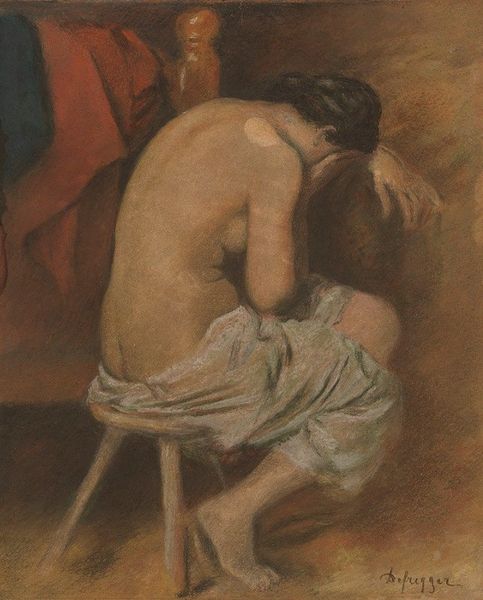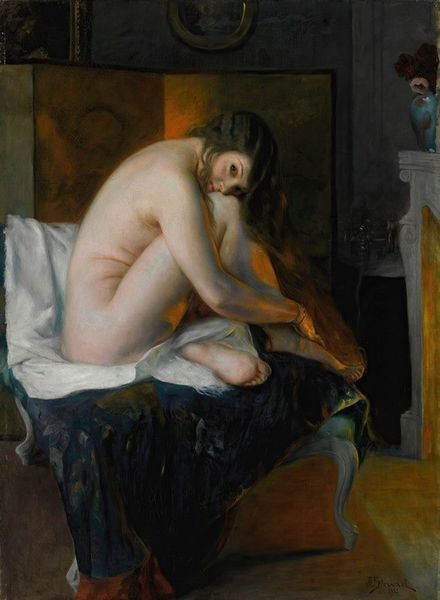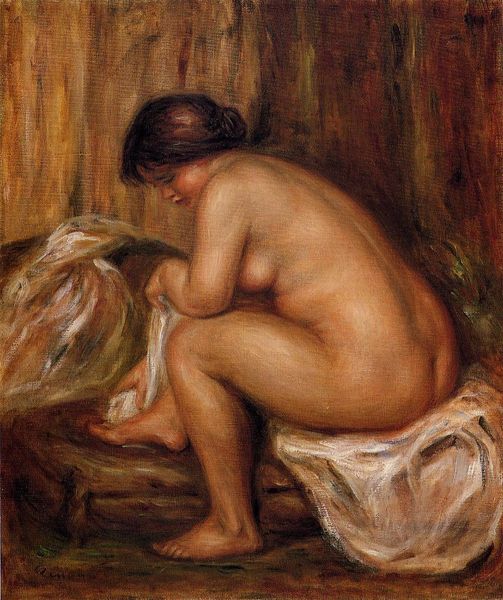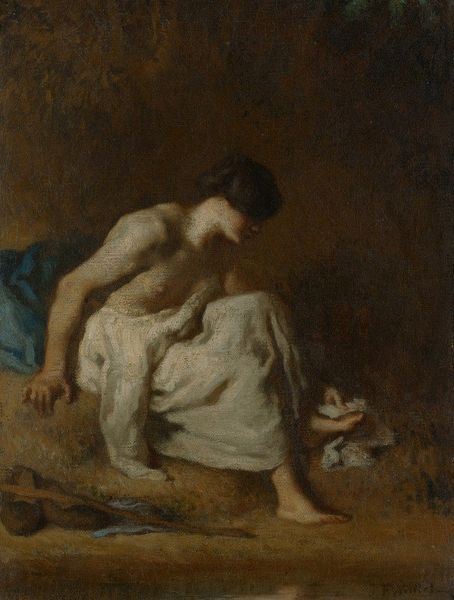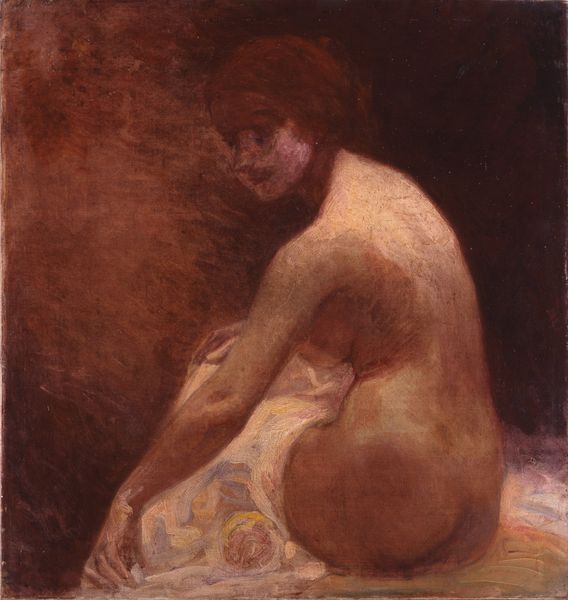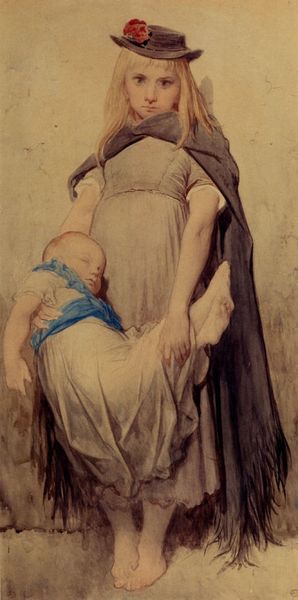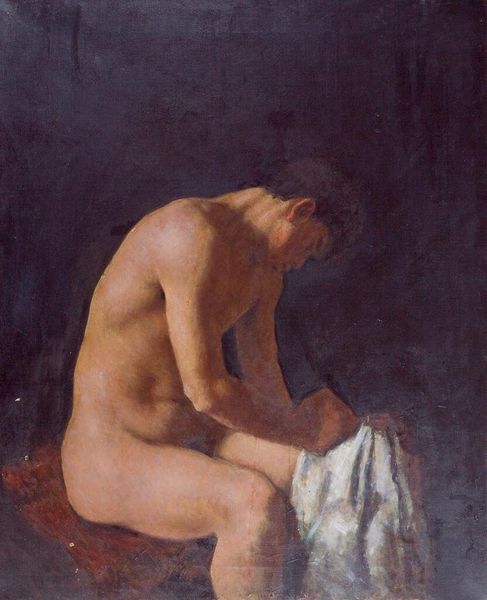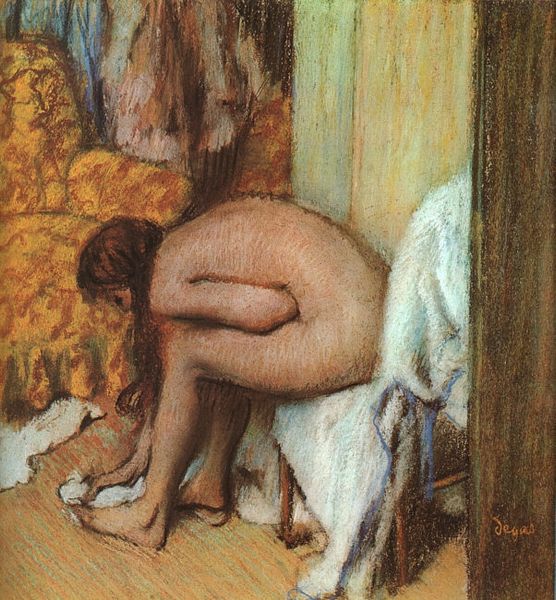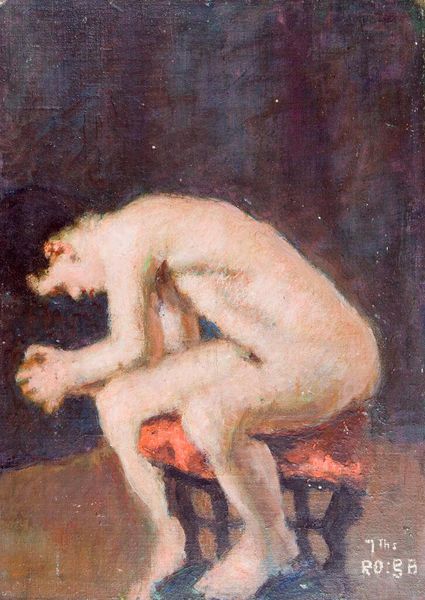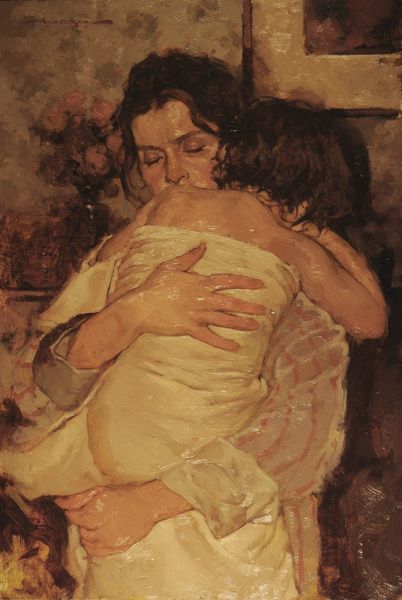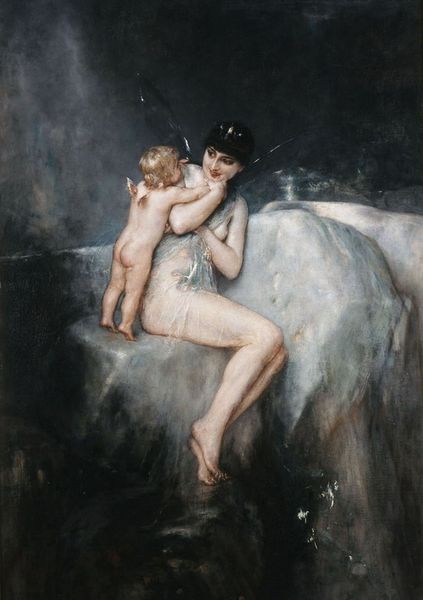
painting, oil-paint
#
portrait
#
figurative
#
painting
#
oil-paint
#
oil painting
#
academic-art
#
nude
#
realism
Copyright: Public Domain: Artvee
Curator: Welcome. Before us, we have "Halbakt," an oil painting crafted in 1880 by Franz von Defregger. Editor: My first impression is a wave of sorrow. The slumped posture, the face buried in her hands, there’s a vulnerability that transcends time. It’s heavy, almost claustrophobic with the darkness closing in. Curator: Absolutely. The artist positions us to contemplate academic art, specifically, the female nude within the socio-political landscape of late 19th century art institutions. Works like this helped reinforce conventional roles and notions of beauty. Editor: It speaks to the commodification and consumption of the female body as a spectacle, reflecting and shaping the prevailing attitudes of its time. Is this merely realism, or an unconscious commentary? Curator: It's undoubtedly complicated. Consider how nudes were received then and how their proliferation legitimized established cultural norms. Yet, if you look at this with modern eyes you have to ask "Where does this painting fit in an historical context, how does that effect the present." Editor: Exactly! We’re seeing how the personal intersects with power and ideology. Where does this image empower, or does it merely solidify outdated notions of representation. How is art used in broader narratives? How has this image become a tool in systems of oppression. Curator: The artworld, then as now, held enormous influence, dictating artistic movements and trends, reinforcing traditional beliefs that echoed in everyday society. Defregger painted other paintings focused on farmers and life, one must look at how that history may inform the reception. Editor: Her nakedness feels not so much of a symbol of sexuality as vulnerability and sadness, yet we may assume such intimacy to render that subject acceptable as merely a model and object for male spectatorship. I am left to wonder what story she could tell. Curator: Perhaps. Either way, reflecting on pieces like "Halbakt," allow us to trace evolving societal attitudes about gender roles, which encourages discussion. Editor: Agreed. Recognizing these intersections, it compels us to dissect whose narratives are being represented and whose are systematically ignored or marginalized.
Comments
No comments
Be the first to comment and join the conversation on the ultimate creative platform.
